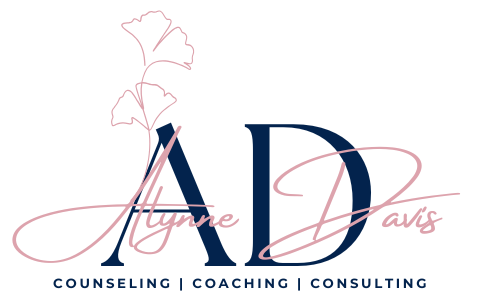If you’ve been feeling stretched thin, burned out, overwhelmed, or like your body and mind are begging you to slow down… you’re not alone.
For so many women—especially those navigating trauma, ADHD burnout, body image struggles, or the endless pressure to “keep it all together”—rest can feel unfamiliar, uncomfortable, or even unsafe.
But here’s the truth your nervous system has been whispering all year:
Rest isn’t giving up. Rest is coming home.
Rest is where healing actually begins.
Rest is where your creativity returns.
Rest is where your body finally exhales.
In trauma-informed and holistic therapy, rest and recovery are not luxuries—they are therapeutic tools. And in expressive arts therapy, rest becomes a doorway back to presence, intuition, and emotional regulation.
Why Rest Matters for a Dysregulated Nervous System
When you’ve been living in survival mode—performing, pleasing, achieving, caregiving, striving—your nervous system stops receiving the signal that it’s allowed to soften.
Rest becomes foreign.
Stillness feels unsafe.
And exhaustion becomes a personality trait.
Trauma-informed therapy teaches us that rest is not passive; it is nervous system healing. When you slow down, you:
- Shift out of fight-or-flight
- Lower cortisol and inflammation
- Restore executive functioning (especially important for ADHD brains)
- Strengthen emotional regulation
- Reconnect with internal signals like hunger, fullness, and fatigue
- Build capacity to process emotions instead of avoiding them
When you rest, your body stops bracing for impact and starts repairing.
How Expressive Arts Therapy Supports Rest
Many women struggle with “traditional rest”—the kind that looks like sitting still, doing nothing, or quieting the mind. That can feel impossible when your nervous system has been on high alert for years.
Expressive arts therapy introduces a different kind of rest:
creative rest.
Creative rest gives your mind softness and your body a place to land. It looks like:
- Gentle movement
- Soothing color palettes
- Soulful journaling
- Collage work
- Clay, texture, or grounding materials
- Slow intuitive drawing
- Photography walks
- Music, breath, rhythm, and flow
In expressive arts therapy, rest becomes an embodied experience—not “just relax,” but “let your body speak in a safe, creative way.” This is especially supportive for women healing from trauma, eating disorders, or body image disconnection, where rest can feel threatening.
Rest, Body Image, and the Pressure to Always Be ‘On’
So many women believe rest must be earned—or that rest is only allowed once everything else is perfect:
Your body.
Your home.
Your to-do list.
Your emotional state.
Your relationships.
This mindset often stems from trauma, cultural conditioning, or chronic exhaustion. And for women healing body image, rest can feel like “doing nothing”—which triggers shame.
But your body is not a machine to be optimized.
It’s a living ecosystem that requires rhythm, softness, slowness, and repair.
Rest is not the opposite of productivity.
Rest is part of your healing.
Rest is part of your recovery.
Rest is part of your relationship with your body.
ADHD Burnout: When Rest Feels Impossible
ADHD brains often cycle between hyperfocus and collapse. Many women with ADHD tell me:
- “I don’t know how to rest.”
- “Rest makes me feel guilty.”
- “I can’t rest unless I’m exhausted.”
- “I get overstimulated even when I’m resting.”
ADHD burnout is real, and one of the biggest gifts you can offer your neurodivergent nervous system is structured rest—rest that is permission-based, supportive, creative, or sensory-friendly.
That may look like:
- Blanket cocoons
- Gentle fidgeting
- Warm tea rituals
- Soft background music
- Slow journaling
- Rhythmic breathing
- Guided creative prompts
- Mindful coloring
Rest becomes accessible when it meets your brain where it is—not where it “should” be.
Rest as a Spiritual Returning: The Soul System™ Perspective
Within the Soul System™—my proprietary healing framework—each archetype understands rest differently.
As you read these, notice which one resonates with you today.
The Doorway of Presence
Rest looks like grounding, pausing, and noticing what your body is trying to tell you.
Reflection:
Where does your body feel safe to rest?
The Carrier of Tenderness
Rest is emotional soothing. It’s internal holding, gentleness, and softness.
Reflection:
What would it feel like to offer yourself tenderness today?
The Bearer of the Hidden
Rest is releasing the weight of what you’ve been silently carrying.
Reflection:
What part of you is tired from holding too much?
The Vessel of Expression
Rest is creative wandering—making something without needing it to be good.
Reflection:
What wants to be expressed without pressure or outcome?
The Keeper of Connection
Rest is allowing yourself to be supported… without performing.
Reflection:
Where can you let yourself rest in relationship?
The Builder of Identity
Rest is integration—becoming who you are when you stop striving.
Reflection:
Who are you when you’re not chasing anything?
A Final Note: You Are Not Behind. You Are Becoming.
If your body is craving rest, it’s not weakness—it’s wisdom.
You’re allowed to slow down.
You’re allowed to do less.
You’re allowed to be a human being, not a human doing.
And you’re allowed to heal gently, creatively, and at your own pace.
Rest is not the absence of healing.
Rest is healing.
Rest is restoration.
Ready to Deepen Your Restoration Journey?
You’re invited to explore rest more intentionally this season:
Download your free guide: The Soul System™ Winter Reflection Journal
—a cozy, creative, therapeutic journal for slowing down and coming home to yourself.
or
Schedule a consultation
to explore trauma-informed, holistic, expressive arts therapy for women in Charlotte, NC or online.
Your healing is allowed to be soft.
Your rest is sacred.
